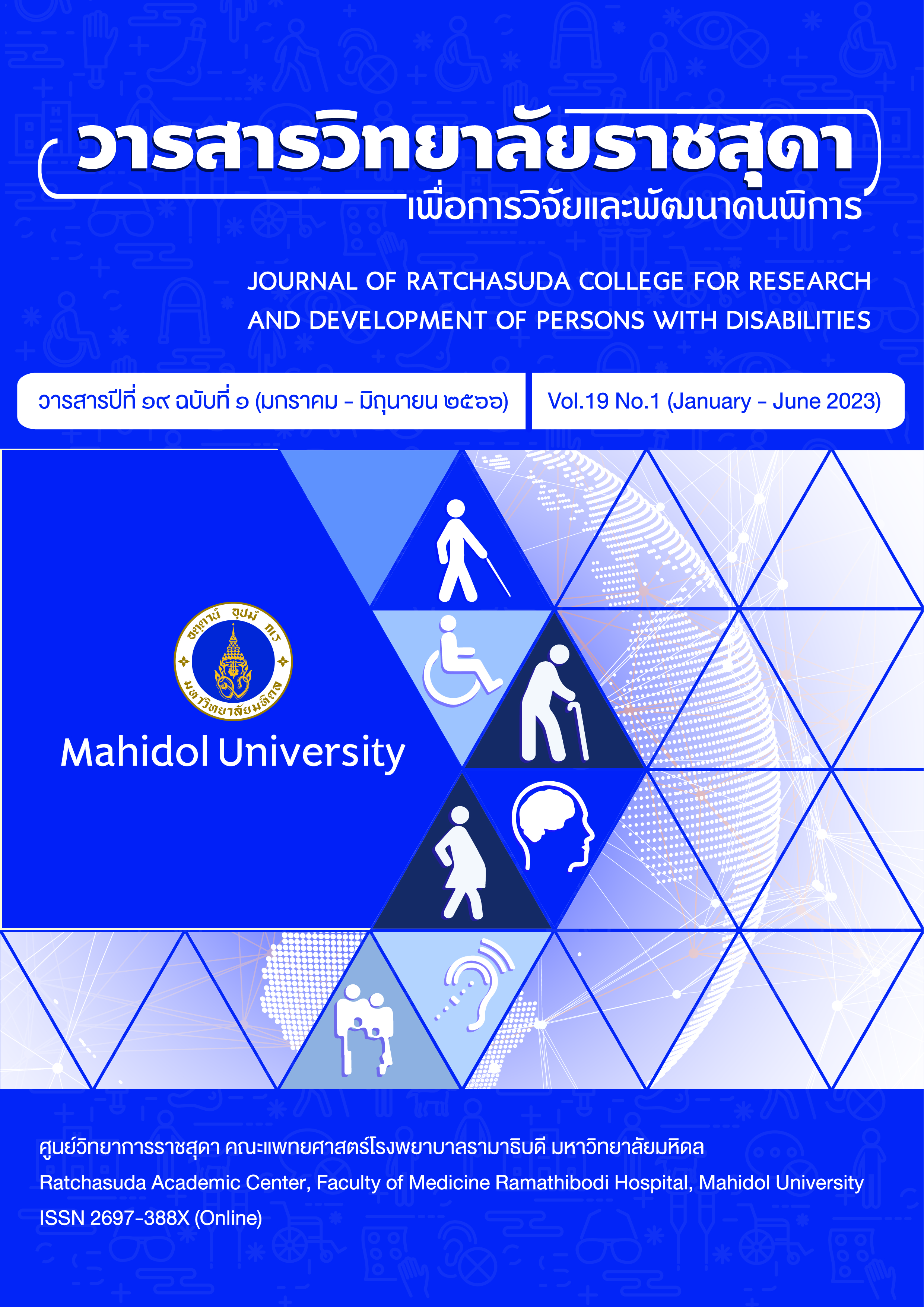Relationship between Employer Branding and Performance of Employees with Disabilities: The Mediating Role of Perceived Person-Environment Fit
Keywords:
Employer Branding, Employee Performance, Persons with Disabilities, Perceived Person-Environment FitAbstract
The purpose of this research was to explore the mediating role of perceived person-environment fit in the relationship between employer branding and performance of employees with disabilities. Data were collected by an online survey from 267 employees with disabilities of Vulcan Coalition company, Bangkok Thailand. The results showed that the perceived person-environment fit in the dimension of perceived person-job fit has an influence on employer branding and the performance of employees work in two dimensions: Task performance and Contextual performance. The performance of employees with disabilities in the Vulcan Coalition are influenced by employer branding perceptions of people with disabilities through the transmission variables perceived between the person and the job. Employees with disabilities who have perceived of employer branding will affect their performance of them. If there are a perception of consistency between the person and the job, it will help to perform the work according to the potential and ability affecting the performance of employees with disabilities more. In other words, the correlation between employer branding and the performance of employees with disabilities are increased when they have perceived between the person and the job. Organizations should promote and create increased perception between the person and the job to make the performance of employees with disabilities more efficient and effective. In addition, to create good employer brand awareness for employees with disabilities.
Downloads
References
Chuang, A., Shen, C. T., & Judge, T. A. (2016). Development of a Multidimensional Instrument of Person–Environment Fit: The Perceived Person–Environment Fit Scale (PPEFS). Applied psychology, 65(1), 66-98.
Koopmans, L., Bernaards, C. M., Hildebrandt, V. H., Schaufeli, W. B., de Vet, H. C., & van der Beek, A. J. (2011). Conceptual frameworks of individual work performance: A systematic review. Journal of occupational and environmental medicine, 856-866.
Mayer, R. C., Davis, J. H., & Schoorman, F. D. (1995). An integrative model of organizational trust. Academy of management review, 20(3), 709-734.
Roongrernsuke, S. (2010). Best HR practices in Thailand. Bangkok: Nation New Network.
Tanwar, K., & Prasad, A. (2017). Employer brand scale development and validation: a second-order factor approach. Personnel Review.
Werbel, J. D., & Gilliland, S. W. (1999). Person–environment fit in the selection process. In G. R. Ferris (Ed.), Research in human resources management, 17, 209–243.
Downloads
Published
How to Cite
Issue
Section
License
Copyright (c) 2023 Ratchasuda Academic Center, Faculty of Medicine Ramathibodi Hospital , Mahidol Universityบทความที่ได้รับการตีพิมพ์เป็นลิขสิทธิ์ของวารสารสถาบันราชสุดาเพื่อการวิจัยและพัฒนาคนพิการ






